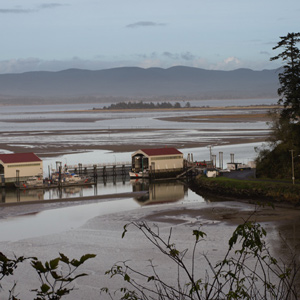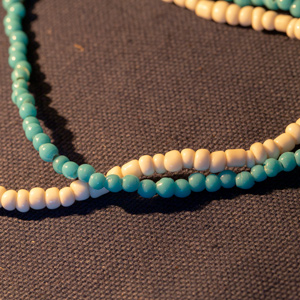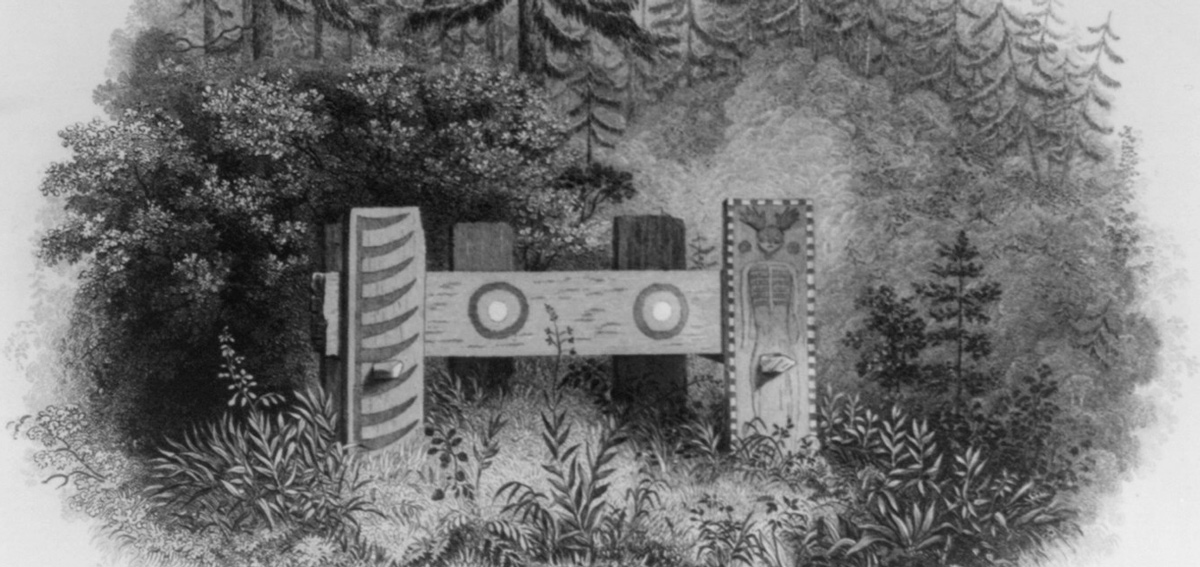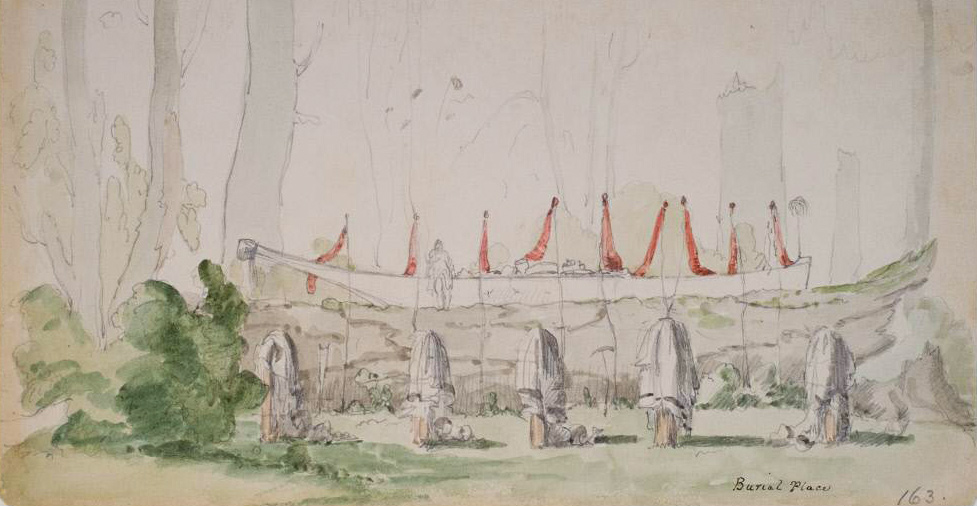Concomly—spelled variously as Comcomly, Com-comly, Concomely and Cumcumley—was a prominent Chinook citizen and leader whose people lived on the north side of the Columbia estuary, on the shore of Haley’s Bay. On November 17, 1805, he introduced himself to Lewis and Clark at Station Camp. “The Chief of the nation below us came up to see us,” wrote Clark. “The name of the nation is Chinook and is numerous. They live principally on fish, roots, a few elk, and fowls. They are well armed with good fusees.”
Concomely’s tomb, Astoria (1841)
Alfred T. Agate (1812–1857)
William E. Tucker, engraver. Courtesy U.S. Library of Congress, www.loc.gov/pictures/item/2001696059/ .
He was a power broker on the lower Columbia River from at least 1795 until his death. When John Jacob Astor’s fur traders established their post at Astoria in 1811, Concomly offered his warriors to help them defend themselves against the British, but when the British seized the fort in 1812, he astutely switched sides.
Concomly is believed to have died about 1830 during an epidemic of “Intermittent Fever,” also called the “Cold Sick”—probably malaria—that plagued the coastal area for several years. His remains were interred in a canoe, according to Chinook custom, in the family burial ground near Point Ellice. In 1835 a Hudson’s Bay Company doctor named Gairdner robbed the coffin of the chief’s skull and sent it to Scotland for scientific study. Some of Concomly’s people placed the rest of his bones in a wooden box and carried them to the hill behind present-day Astoria, overlooking the river. The tomb there was in ruins when Agate recreated the scene with his pen in 1841.[1]Robert H. Ruby and John A. Brown, The Chinook Indians: Traders of the Lower Columbia River (Norman: University of Oklahoma Press, 1976), 194-96; Charles Wilkes, Narrative of the United States … Continue reading
King Comcomly’s Burial Canoe (1847)
by Paul Kane (1810–1871)
Watercolor and pencil on paper, 5 3/8 x 9 3/8 inches (13.6 x 23.8 cm). Courtesy Stark Museum of Art, bequest of H.J. Lutcher Stark, 1965, Object no. 31.78.85, collections.starkculturalvenues.org/objects/39883/king-comcomlys-burial-canoe?ctx=a2103a32-7675-4ff5-b402-ddb3c4b7cb61&idx=111
The artist Paul Kane never mentions visiting Astoria, yet his Landscape Log identifies this burial as “The grave of Com-comly at Astoria, Chief of the Chinooks.” Elsewhere, he wrote, “His burial canoe was placed on a fallen pine tree of immense size, some 40 or 50 feet in circumference.”[2]J. Russell Harper, Paul Kane’s Frontier (Toronto: University of Toronto Press, 1971), 302; Paul Kane, Pictorial Sketches with Historical notices taken during two journeys across the Continent … Continue reading
Selected Encounters
November 17, 1805
A disappointing cape


At Station Camp, Clark trades with some Chinooks and gathers volunteers to visit the Pacific Ocean tomorrow. Lewis returns from Cape Disappointment without finding any ships.
November 20, 1805
Sacagawea's belt of blue beads


At Station Camp on present Baker Bay, the captains meet with Chiefs Concomly and Shelathwell. Another Indian trades two sea otter skins for Sacagawea‘s belt of blue beads, and she is given a new coat.
Notes
| ↑1 | Robert H. Ruby and John A. Brown, The Chinook Indians: Traders of the Lower Columbia River (Norman: University of Oklahoma Press, 1976), 194-96; Charles Wilkes, Narrative of the United States Exploring Expedition (6 vols. 1844-45), 4:321. |
|---|---|
| ↑2 | J. Russell Harper, Paul Kane’s Frontier (Toronto: University of Toronto Press, 1971), 302; Paul Kane, Pictorial Sketches with Historical notices taken during two journeys across the Continent of America to the Columbia River & Northwest coast of the Pacific in the years 1845 1846-1847 & 1848. |
Experience the Lewis and Clark Trail
The Lewis and Clark Trail Experience—our sister site at lewisandclark.travel—connects the world to people and places on the Lewis and Clark Trail.
Discover More
- The Lewis and Clark Expedition: Day by Day by Gary E. Moulton (University of Nebraska Press, 2018). The story in prose, 14 May 1804–23 September 1806.
- The Lewis and Clark Journals: An American Epic of Discovery (abridged) by Gary E. Moulton (University of Nebraska Press, 2003). Selected journal excerpts, 14 May 1804–23 September 1806.
- The Lewis and Clark Journals. by Gary E. Moulton (University of Nebraska Press, 1983–2001). The complete story in 13 volumes.



